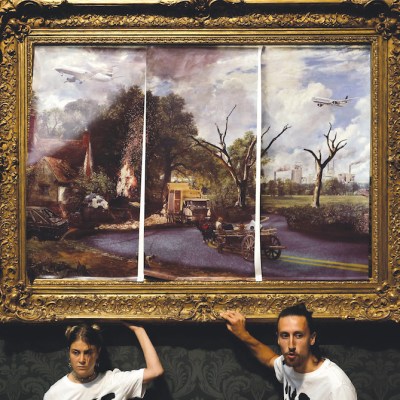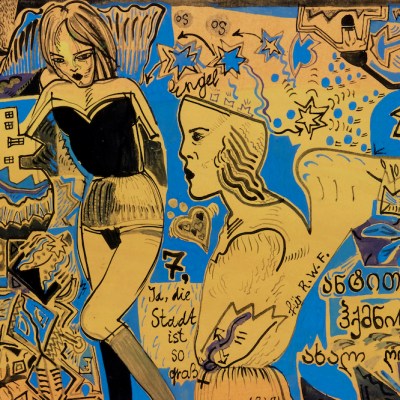From the May 2024 issue of Apollo. Preview and subscribe here.
Scottish kings of the House of Dunkeld were not, as Malcolm suggests in the last line of Macbeth, ‘crown’d at Scone’. The climax of the inauguration ceremony at Scone Abbey, with its roots in the pagan past, was not a coronation but rather the moment when the new monarch was set upon the Stone of Destiny: a 152 kg hunk of sandstone which, according to legend, was brought from Ireland by the mythical founder of Scotland, Fergus Mór, at the turn of the sixth century. Another story identifies the stone as the biblical Jacob’s Pillow, consecrated at the place where the son of Isaac dreamed of a ladder from earth to heaven.
In 1296, the armies of Edward I of England confiscated the stone and took it south. Barring a brief sojourn in 1950, when it was stolen by four Scottish students on Christmas Day and recovered four months later on the altar of Arbroath Abbey, it remained in Westminster Abbey until 1996, when it was transferred to Edinburgh Castle. It remains the property of the Crown and can be recalled (as it was last year) for coronations – a purpose it has served in London since at least the time of Henry IV. For now, however, the stone has returned to Perthshire for the first time in more than seven centuries to form the centrepiece of the new Perth Museum, which has broken away from the former Perth Museum and Art Gallery, a short walk away in the 19th-century Marshall Monument, to stand alone. A £27m project, this is the largest capital investment in culture this historic but, by contemporary reckoning, tiny city, with a shade under 50,000 souls, has ever seen.
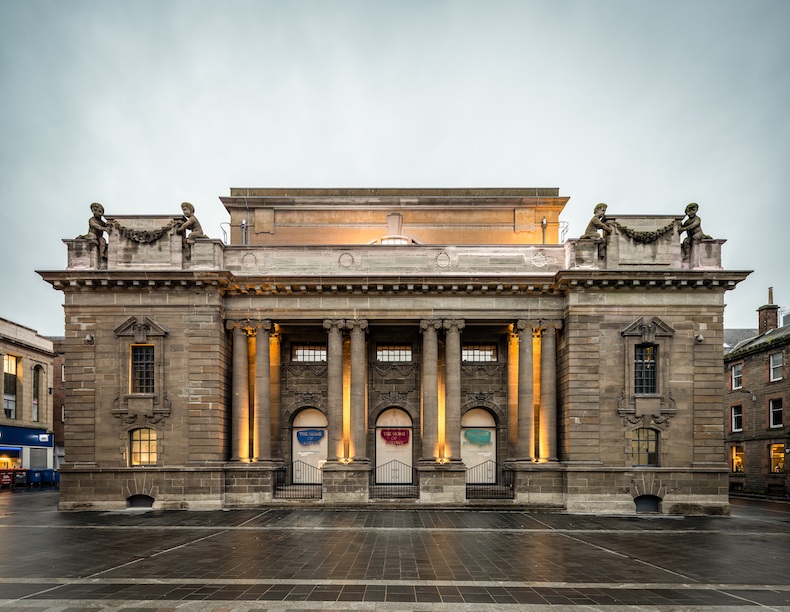
Entering the museum – housed in the former City Hall, a piece of phoned-in Edwardian classicism that had lain vacant since 2005, its interiors now refitted by Dutch architects Mecanoo – visitors are met with a box-like edifice in the centre of the main hall. Before it, you wait, and at the right moment are allowed to enter a little antechamber in which is played a video detailing the history of the stone, while on the walls surrounding are projected Studio Ghibli-esque animations of misty medieval Scotland. When the video is done, the doors swing open automatically to admit you to a room containing nothing but the stone itself. Nothing, that is, but an inherently unimpressive lump of sandstone.
It all feels distinctly silly. But then, the unremarkable nature of the stone has often been an excuse for fun; after the heist of 1950, stories proliferated that a dummy had been sent back to Westminster and the ‘real’ stone remained hidden elsewhere. I come to realise that this is perhaps the most captivating moment of theatre I can recall in a museum – set-up and punchline together creating a profound sense of disconnect between the reality of material things and the stories that are woven around them. It is to the credit of the curators that they haven’t treated the stone with po-faced reverence but, rather, seem aware of its arbitrariness, which chimes with the wider project of the museum. This is, senior programming and interpretation officer J.P. Reid tells me, a museum that is interested in ‘power – the articulation of power, and how objects become symbols of power’.
The museum is well placed to address this subject, primarily because of how historical design and ecological chance have conspired to shape its collections. When Perth was founded around the year 1000, its location was chosen at the highest point of the River Tay navigable by ship, and the lowest that could be bridged. The economic capacity this enabled was a matter of national importance, for Perth was built to serve the symbolic and spiritual heart of the kingdom up the road; Reid likens the relationship between Perth and Scone to that of the City of London and Westminster. Quickly the fledgling town became a cosmopolitan hub, the landing place of merchants and dignitaries from Scandinavia, England, France and Flanders, many of whom settled. Trade brought wealth and its trappings: fine silks, wools and leathers; elaborate metalwork and carvings in wood. That an unusual proportion of the more perishable of these objects has survived here is thanks to a high water table, the propensity of the Tay to flood and the resultant anaerobic condition of the soil.
This has also resulted in abnormal survivals from prehistory – most notably the Bronze-Age Carpow Logboat, a nine-metre-long, hollowed-out oak trunk that is one of the best preserved of its kind in Britain. The visitors’ trail starts at the logboat and progresses through relics of the Romans’ sporadic incursions (and the resistance they met with) and of the era of Pictish hegemony that followed. But it’s in the medieval galleries – focusing on the period after power had coalesced into the kingdom now known by the Gaelic name of Alba, with Scone as its focal point – that the museum comes into its own. Here are the majestic possessions of the noble Ruthven family, including silks, ceramics and a chair into which is carved their elaborate coats of arms; here is the ornate Glenlyon reliquary brooch, silver set with pearl, amethyst and crystal, invoking the protection of the three Magi.
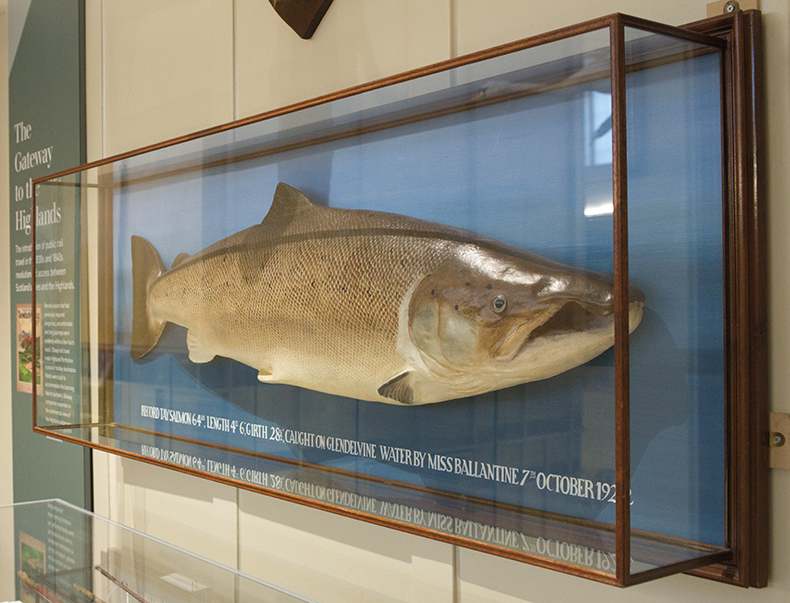
The ‘official’ version of events is dealt with in a circuit of the main hall, immediately around the Stone of Destiny. Forming a wider, concentric circle, however, are what the museum calls ‘slip galleries’ – and, like comic side-plots in one of Shakespeare’s history plays, these turn the focus from nobility to commoners. A toilet seat from the 13th or 14th century carries idle, incised graffiti; there are lice combs, silk hair-nets, leather shoes and embossed knife sheaths. Reid tells me that the intention has been to provide both a ‘top-down’ and a ‘bottom-up’ perspective on history, which investigates how power has defined and perpetuated itself, and how ordinary people have been affected.
Upstairs, the story continues in a similar key. A huge diorama populated by taxiderms tells you that you’re in a local authority museum of 19th-century origin, and there are other moments that deliberately preserve beloved features of the old museum – not least a cast of the heaviest salmon ever caught by rod in Britain, reeled in from the Tay by one Georgina Ballantine in 1922. But there are also telling reminders here that, though Perth had ceded its role as the seat of national power to Edinburgh in the 15th century, power continued to exert itself here in more subtle ways. A landscape of Loch Katrine by Horatio McCulloch from 1866 depicts a rugged wilderness void of the Highland populations that were then in the process of being cleared. (It’s one of very few examples of fine art here, each displayed with an emphasis on social history. If you’re after aesthetic diversion, Perth Art Gallery has taken advantage of the departure of its roommate to rehang its rich holdings of European and Scottish art.) One slip gallery focuses on the world-culture collections: displays of Maori regalia have been created with the involvement of curators from the Museum of New Zealand Te Papa Tongarewa, while other cabinets detail how Perth’s Literary and Antiquarian Society, which developed the core of the collection, participated enthusiastically in the project to amass and categorise cultural artefacts from Britain’s overseas colonies.
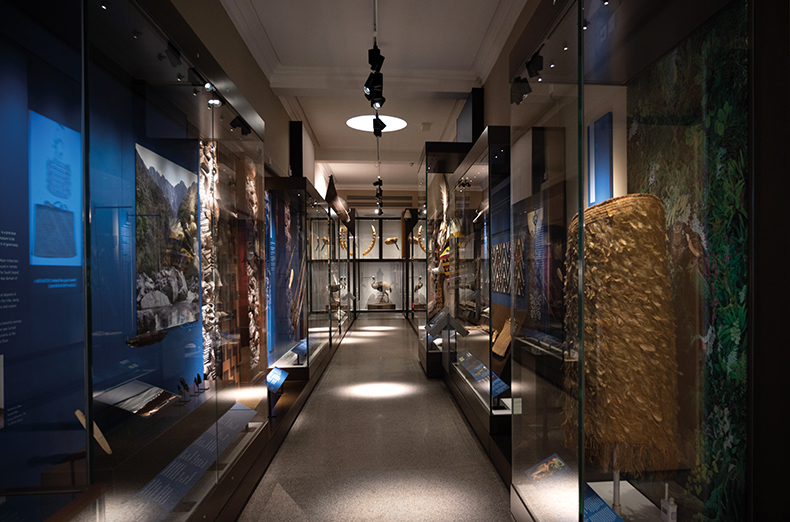
With ‘Unicorn’ (until 22 September), Reid tells me that he has tried to set a precedent for temporary exhibitions that develop the ideas prompted by the museum at large, rather than ‘parachuting in’ displays with little relevance to the wider collection. The unicorn has meant many things to many people – from Scotland’s national animal, emblem of the Stuart monarchs and a medieval panacea for disease to a symbol adopted by the LGBTQ+ movement. Confronted with a narwhal’s tusk, I reflect that, as with the Stone of Destiny that lies directly beneath me, I am in the presence of material evidence of a fiction. But if a fiction is compelling enough, then who’s to say it isn’t real?
Of course, it’s not just its collections that bind this museum to the vagaries of power. The outlook for Scottish museums is increasingly bleak, the sector potholed with redundancies, closures, cancellations and other scalings-back. ‘We are always at the behest of the political masters of the time,’ says Helen Smout, chief executive of the predominantly council-funded charitable trust Culture Perth and Kinross. She is confident in the ‘core support of the council’ in the future – nonetheless, this was a project born in a pre-pandemic world, bolstered by a highly unusual £10m grant from the UK government as part of the Tay Cities Deal. A £27m investment in culture-led regeneration when, as Smout puts it, councils are having to decide between that and care homes has begun to feel like a relic in its own right. It remains to be seen from where the funds might come to follow ‘Unicorn’ with similarly wide-ranging assemblages of national and international loans. Still, for now, it’s no disservice to the illustrious history of Perth to suggest that the city has been bestowed with a museum fit for a commoner.
From the May 2024 issue of Apollo. Preview and subscribe here.

